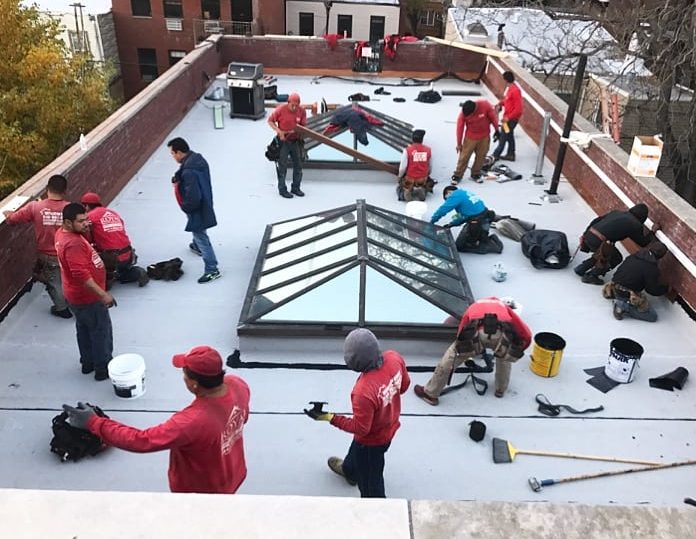
One issue that frequently plagues flat roofs is the dreaded roof leak. Flat roof leaks can occur for a legion of reasons, that may not be incontinently obvious. However, you’ll need to carry out a thorough examination to identify the root of the trouble and get it fixed, if your flat roof is leaking. Failing to do so snappily could lead to all kinds of issues, including flooding, decaying, and mold. Nothing is relative as concerning as observing an unvarying drip of water coming from your ceiling. This is an eventuality if you neglect to repair your roof. As water flows from your ceiling during massive rain, there's little you can do. If you notice this call a professional roofing company to repair the leak in your roof.
There are numerous causes of flat roof leaks. The frequent sources include the following;
You may need to save money until you have the deposit to invest in the required repairs for your roof, which means you’ll need to make some repairs of your own and this are the ways.
Look for the origin of your leak from inside the structure. The water may have scampered along your roof through the leak and pooled in a distant spot, meaning the leak may not be the spot that has the most water.
Take the measurements you formed from the interior and begin looking for the leak on the roof. However, look for any detriment to the roof membrane near any flashing or outlets on the roof, if no detriment is apparent.
Your roof may possess debris that can hamper your work or which can beget more damage. Precisely take off any foreign objects from the area near the roof leak before starting work. You’ll also be able to judge if your roof was damaged in a storm or if it's simply facing age-related wear and tear and gash.
Flat roofs frequently collect water, so be certain to dry the area you propose to repair before you begin to work edit. However, you could prompt mold to grow under your roof, If you repair a hole and trap humidity underneath your patch. However, you may need professional backing, if large quantities of water are already rolling in between layers of your roof.
Look for any blisters on your roof, which can denote that water or air has strained between the diverse layers of your roof. You'll also need to check for splits which generally indicates long-term sun detriment.
Peel back the layers of the membrane you cut and apply roofing cement to the leak and to the whole quarter of the roof underneath the membranes you cut down. This will stuff it and will also give an adhesive for the flaps of the membrane to cling to. Press the membrane flaps to the cement to reseal the cut.
Once you lay down the flaps of the blister, nail them to the roof to completely keep them in the spot and to bar the leak. Make sure you won’t be nailing any cables underneath or any other sensitive structure. Cover the nails with a further roofing cement to seal any holes you may make.
We're your go-to company for repairs and installation of roofs, reach out to us at 68-38 Main Street #2 Flushing, NY 11367 (718) 489-4009 https://www.kingsqueensroofing.com